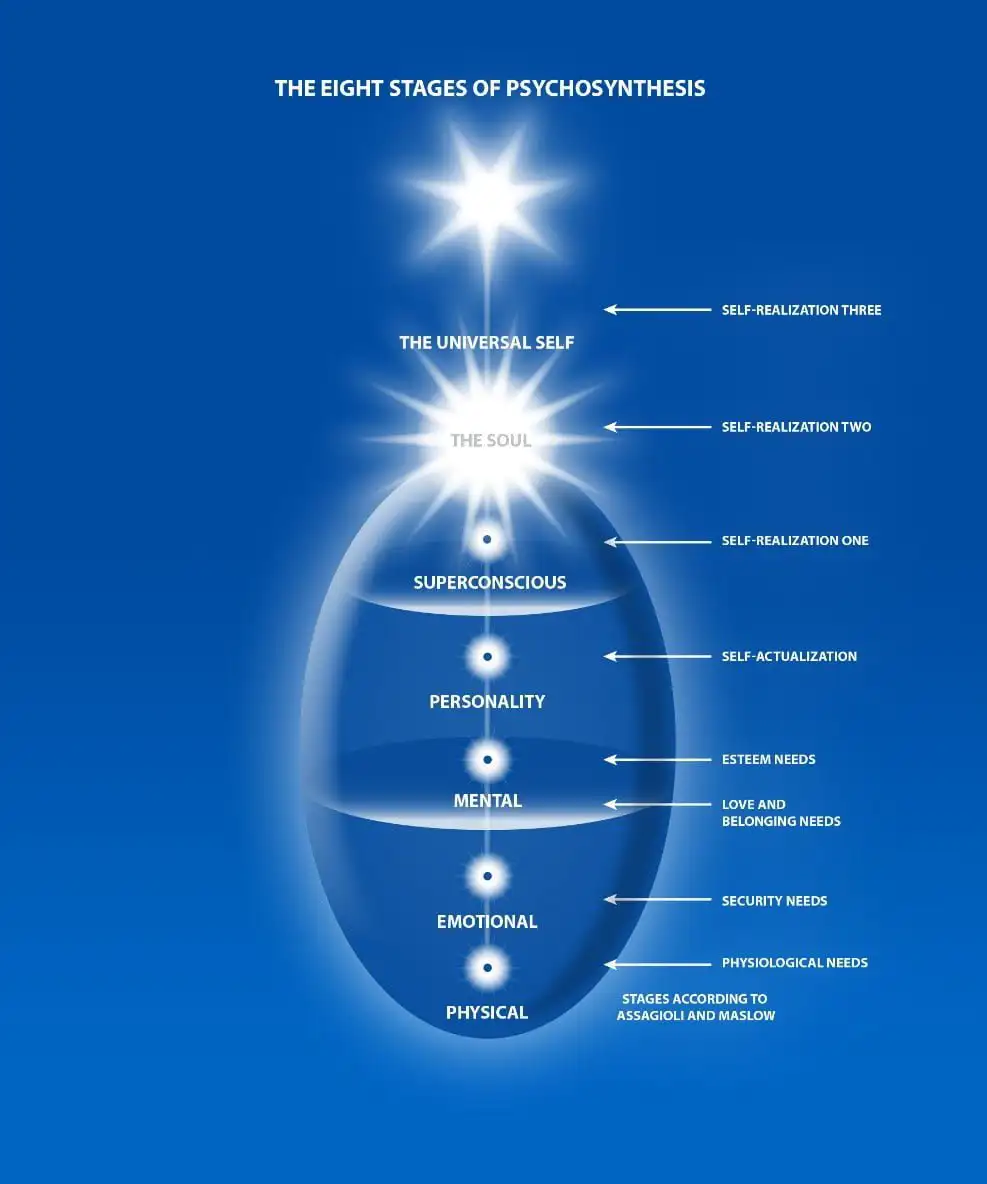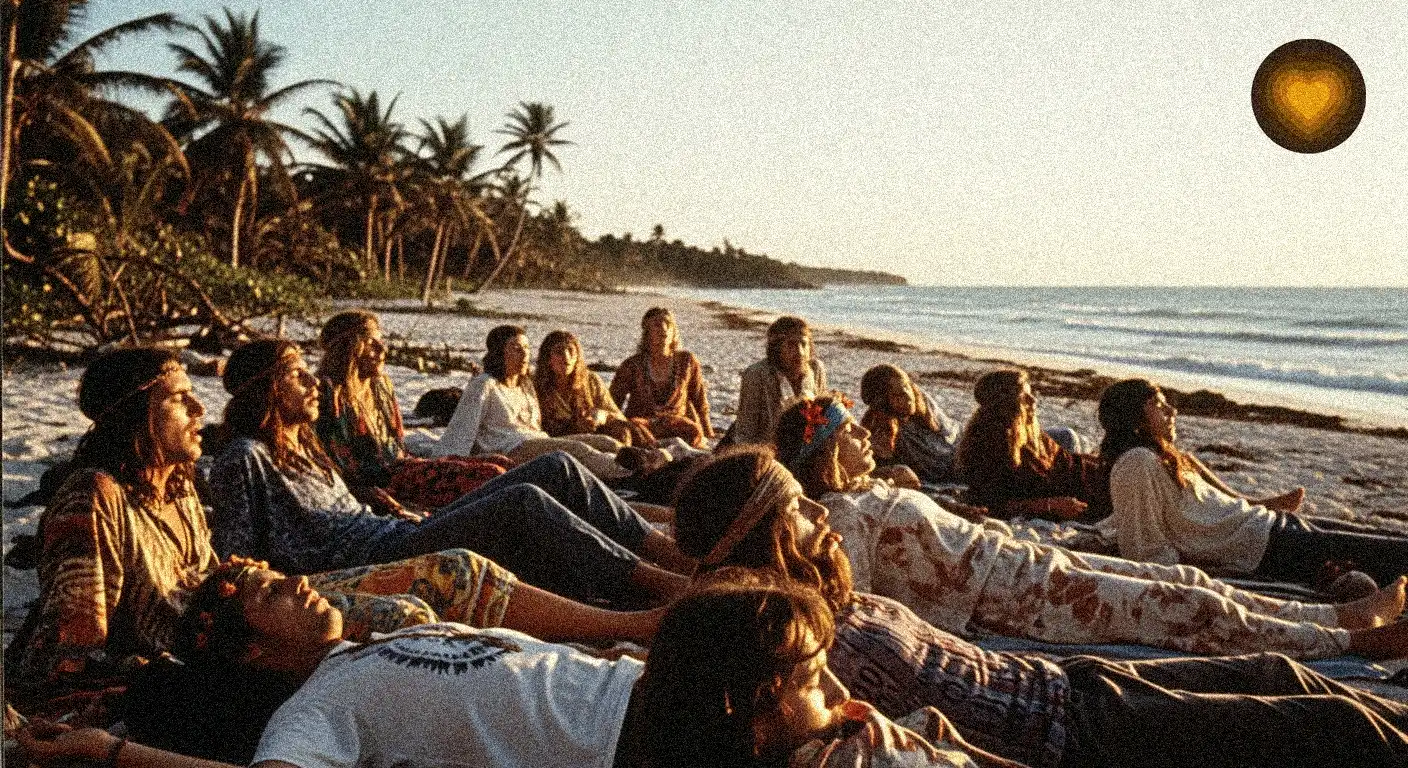Part 2: Pillars of Modern Transpersonal Practice
In Part 1: The Fourth Force - A Psychology That Includes Your Soul, we introduced Transpersonal Psychology as a holistic approach to understanding human consciousness. Now, let's meet some of the key thinkers whose brilliant work provides the foundation for modern transpersonal practice. Their models offer invaluable maps for the deep inner work we explore at Compassion Retreats.
Stanislav Grof and the Cartography of the Psyche
Stanislav Grof's work is one of the most influential pillars of transpersonal psychology, rooted not in theory alone, but in decades of intensive clinical research with psychedelic substances like LSD. Through thousands of supervised sessions, he systematically mapped the phenomena that arise from what he called "non-ordinary states of consciousness."
Grof created a detailed "cartography of the human psyche" that goes far beyond traditional models. He identified three main domains:
- The Biographical Domain: This is similar to the Freudian unconscious, containing memories, conflicts, and traumas from our lives. Psychedelic therapy, he found, could allow for a full reliving and resolution of this material.
- The Perinatal Domain: This was Grof's unique contribution. He discovered that people consistently re-experienced the trauma and ecstasy of their own birth. He mapped these into four Basic Perinatal Matrices (BPMs), from the oceanic unity in the womb (BPM I) to the struggle of labor (BPM II & III) and the final release of birth (BPM IV). He saw these as powerful templates for many of our emotional and spiritual experiences.
- The Transpersonal Realm: This domain opens up after biographical and perinatal material is processed. Here, consciousness can expand beyond the ego, identifying with other people, species, or the entire cosmos. Experiences can include ancestral memories, encounters with archetypal figures, and past-life-like memories, all feeling profoundly real and meaningful.
When LSD research was halted, Grof and his wife Christina developed Holotropic Breathwork. This powerful technique uses accelerated breathing, evocative music, and bodywork to access the same deep states of consciousness, offering a legal and accessible path for the kind of profound self-exploration and healing we value in our spiritual retreats.

Ken Wilber and the Integral Vision
Ken Wilber is one of the most ambitious theorists in the transpersonal world, known for creating a "theory of everything" for consciousness. His Integral Psychology is a massive effort to honor and integrate valid insights from hundreds of sources, from Eastern spiritual traditions to Western developmental psychology.
The core of his system is the AQAL model (All Quadrants, All Levels, All Lines, All States, All Types), a framework with five key elements for viewing reality:
- Quadrants: Divides reality into four perspectives: the individual's inner world ("I"), their outer behavior ("It"), our shared cultural world ("We"), and our shared social systems ("Its"). An integral view must consider all four.
- Levels (or Waves): Stages of consciousness development, from pre-personal (infant) to personal (ego) to transpersonal (psychic, subtle, causal, nondual). Each stage "transcends and includes" the one before it.
- Lines (or Streams): Different developmental capacities, like cognitive, emotional, or moral intelligence. A person can be at different levels in different lines.
- States: Temporary states of consciousness, like waking, dreaming, or altered states from meditation or psychedelics. These can give us glimpses of higher levels but aren't permanent stages.
- Types: Consistent styles that add texture, like masculine/feminine energies or personality types (e.g., Enneagram).
Wilber's work, while sometimes abstract, provides the most comprehensive theoretical map of consciousness to emerge from the transpersonal movement, offering a rich context for understanding the multifaceted nature of the journeys undertaken in our psychedelic retreats in Mexico.
Roberto Assagioli and the Act of Psychosynthesis
While Grof and Wilber are more contemporary, Roberto Assagioli is a foundational pillar. A peer of Freud and Jung, he developed Psychosynthesis in the early 20th century because he felt psychoanalysis was missing the bigger picture. He created a holistic approach that addresses not just our personal healing but also our spiritual potential.
Assagioli's model, the "Egg Diagram," maps the psyche, including:
- The Lower and Middle Unconscious: Similar to traditional psychology.
- The Higher Unconscious (or Superconscious): His key addition, this is the source of our higher impulses: selfless love, creativity, ethical callings, and spiritual insights. He believed we suffer not just from repressing our basic instincts, but also from the "repression of the sublime"—failing to live our highest potential.
- The Conscious Self ("I"): The point of pure self-awareness, the observer.
- The Higher Self (or Transpersonal Self): Our true, enduring spiritual center. The goal of Psychosynthesis is to integrate our personality around this Higher Self.
To achieve this, Assagioli developed practical techniques like working with our various subpersonalities (e.g., the Inner Critic, the People-Pleaser) and strengthening the Will. A core practice is Disidentification, where we learn to observe our thoughts and feelings without being defined by them ("I have emotions, but I am not my emotions"). This helps us connect with the calm, aware "I" at our center, which is the first step toward connecting with the wisdom of the Higher Self.

Sources for this article
- Stanislav Grof - Wikipedia
- What is Holotropic Breathwork? A Complete Guide
- Integral theory (Ken Wilber) - Wikipedia
- The AQAL Model: A Brief Introduction - Integral Life
- Roberto Assagioli - Wikipedia
- Psychosynthesis - Wikipedia
- Seven Basic Constructs of Psychosynthesis
Ready to explore your own inner map? Discover how our private spiritual retreats in Tulum integrate these profound psychological insights.





